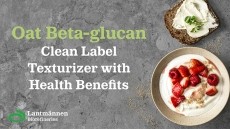Tate & Lyle extend capacity of EU production base for soluble fibre
The global ingredients company is expanding capacity at its polydextrose production plant in Koog in the Netherlands to allow for the manufacture of its Promitor soluble gluco fibre - a move the supplier said will allow it greater proximity to a range of European countries where it notes massive consumer demand for fibre coupled with considerable GMO-sensitivity.
Speaking to FoodNavigator.com this morning, Jerome Tauzin, product manager health & wellness at Tate & Lyle, said the initial prompt to start production in Europe of a fibre line that has primarily been produced in the Americas was a call from US-headquartered multinationals for locally based sourcing to support their European-based operations.
“A second global production site also ensures continuity of supply and reduces risk from our perspective,” added Tauzin.
Production capacity
He would not be drawn on expected production capacity for the fibre from the Koog facility but said the non-GMO fibre will initially be available in liquid form, which provides costs savings to manufacturers as it reduces the cleaning steps required in processing.
Promitor SGF70L, he explained, can be incorporated into a range of foods and drinks from bakery and snacks, soups, dairy and ready meals for added-fibre benefits with no resulting off-taste or can be used from a functional perspective to reduce sugar content in the final product,
“It can even work in clear beverages,” continued Tauzin, adding that the dietary fibre is well tolerated and provides clean label benefits.
Labelling quandary
He explained that the company’s soluble fibre allows multiple labelling options from soluble gluco fibre, maltodextrin or gluco-oligosaccharide, an important factor, explained Tauzin, for manufacturers operating in the European market that must communicate in several languages.
“One term can be more appealing in one language than another,” he added.
Fibre assocations
Understanding how consumers view the potential health benefits can help food formulators meet consumers needs. “Consumers associate fibre with digestive health, feeling regular, maintaining healthy digestive […] beyond that it’s about weight management,” Dr Einerhand, director of health and nutritional science, Tate & Lyle told this publication previously.
The majority of consumers understand the word ‘fibre’, and they also understand ‘dietary fibre’, but it gets a bit more complicated when you’re talking about prebiotics, or talking around soluble and insoluble fibre,” she said.
“It is important to be aware of the fact that how you label the fibre will determine if consumers directly understand what you mean,” added Dr. Einerhand.




























